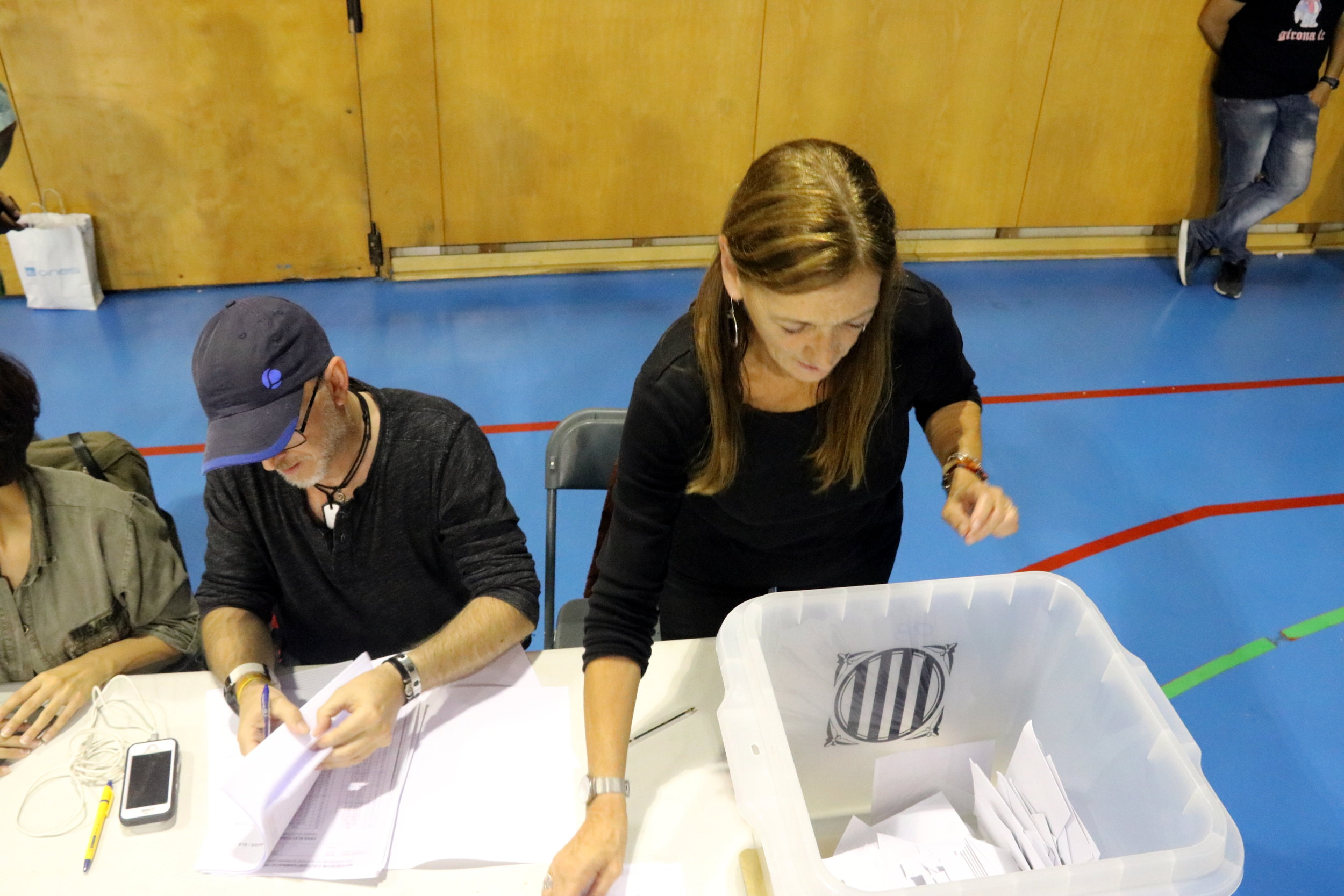Two years since the Catalan referendum: a contested story with its verdict looming
Role of voters, leaders, police, public money and ballot boxes that day will be weighed by judges shortly, as October 1, 2017 still shapes politics in the country

A referendum. Police violence. A month of protests. A declaration of independence. Suspension of self-rule and the sacking of the government. Prison. Exile.
It’s been two years since the events surrounding the push for independence that changed Catalonia, and that still shape its politics, and to some extent its public life, 24 months on. Above all, it's been two years since the self-determination referendum held without Spain’s consent.
And those unprecedented times in the country's modern history are also set to have a crucial impact this October – several judicial procedures are ongoing, and the one involving the highest-ranking political and civil leaders at the time is expecting a verdict within days.
If the long-awaited verdict is a guilty one, it could spark an angry reaction in the pro-referendum camp, but whatever happens, Spain’s Supreme Court judges will have to respond to several contested issues discussed during the trial around the landmark October 1, 2017 referendum, which marks its second anniversary this week.
Were voters peaceful or violent?
The footage from that day leaves little doubt about whether the Spanish police used physical force against the voters – Catalonia’s health department registered 1,066 referendum voters injured by the police, who launched an operation in the morning at dozens of polling stations in an attempt to stop the vote.
Yet the role of the voters is much more controversial. Thousands stood or sat outside and inside the polling stations to make sure the vote would go ahead. What voters testifying in the trial as witnesses and defense lawyers described as “passive resistance,” the public prosecutors branded as “human barricades launched at police.”
Were Catalan leaders planning to use violence?
The nine politicians and activists who have been in custody for up to two years over the 2017 referendum case are accused of rebellion, which is an offense that implies the use of violence, and carries prison sentences of up to 25 years in jail for each of those charged.
The public prosecutors branded the whole independence bid two years ago a “coup d’etat” and an “uprising” led by the jailed leaders. Some police officers even referred to September-October 2017 as the “insurrectionary period.”
The defenses rejected this view, as the defendants themselves did. “We’ve always rejected violence. A noble political goal can become immoral if you use incorrect mechanisms to achieve it,” said the Catalan vice president at the time, Oriol Junqueras.
What was the role of the Catalan police?
The footage from the referendum day shows Spanish police officers using physical force against voters, but not members of the Catalan police. There was a judiciary ruling ordering the law enforcement agencies to stop the vote, but to do so “without affecting the normal coexistence between citizens.”
This ruling was highly controversial during the trial, as the heads of both police organizations interpreted it differently, as they said during the hearings.
In any case, the former Mossos d'Esquadra Catalan police chief, Josep Lluís Trapero, said his officers had “no goal other than obeying court orders.” Although the Mossos report to the Catalan government, they are not supposed to receive interference from politicians aiming to achieve their goals – and Trapero denied any pressure from the executive to facilitate the referendum.
“I defended the referendum as a politician, but as interior minister I told Catalan police to follow court orders," said the former minister Joaquim Forn in the dock. He added that while the Spanish police closed 106 polling stations, the Catalan police closed 297.
Yet, Spain’s Guardia Civil colonel Diego Pérez de los Cobos, who oversaw the entire operation, said the Catalan police had designed a plan that “would not prevent the vote.”
"It looked more like a plan for an election than an illegal vote," he added.
How did the ballot boxes reach the polling stations?
The referendum was called by the government, so the prosecutors assume the prosecuted ministers, along with the ones who absconded, organized the vote and set up its logistics.
Yet, after 400 witness testimonies and four months of trial, they were not able to find any evidence of how the ballot boxes reached the polling stations.
“I didn’t know where the ballot boxes were made, or where they were being kept, but I trusted my country to have them ready for the referendum,” said former minister Rull when asked about it. None of the prosecuted individuals gave any information about the logistics.
Indeed, it is thought the logistics of the vote and how the ballot boxes reached the polling stations involved hundreds of people cooperating inside and outside Catalonia.
Was public money spent on organizing the referendum?
In denying any knowledge of the referendum's logistics, all nine jailed leaders, and three other prosecuted former ministers who were released on bail, denied any misuse of public funds to organize the vote.
It is thought that it was financed with private funds, but the prosecutors accused the Catalan government of embezzling three million euros to pay for the referendum and this, they said, makes the rebellion charges against nine of the 12 leaders more serious.
Yet, no public servant or government official in 2017, or businessperson linked to the referendum, acknowledged spending or receiving public money during the preparations for the vote.